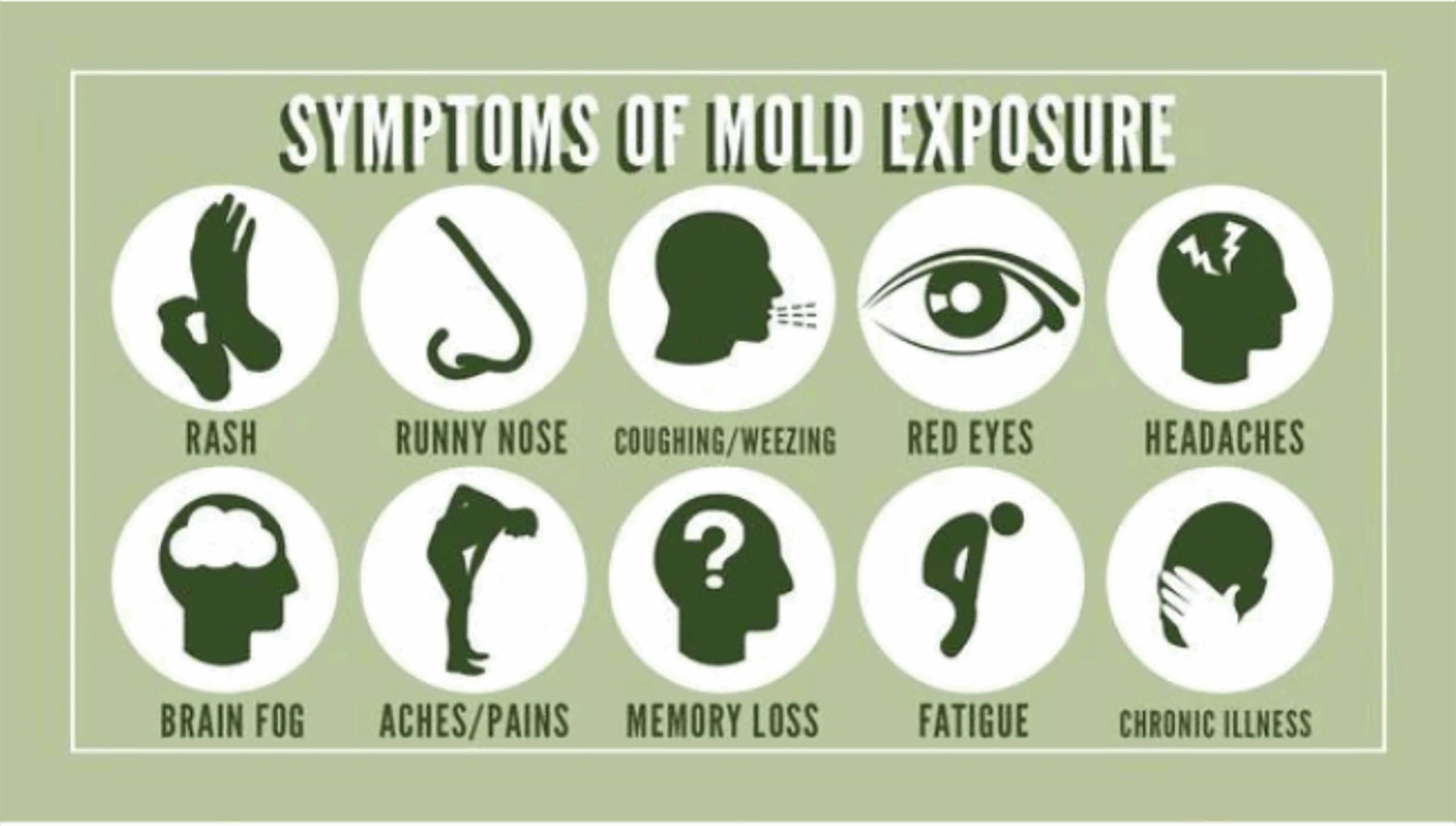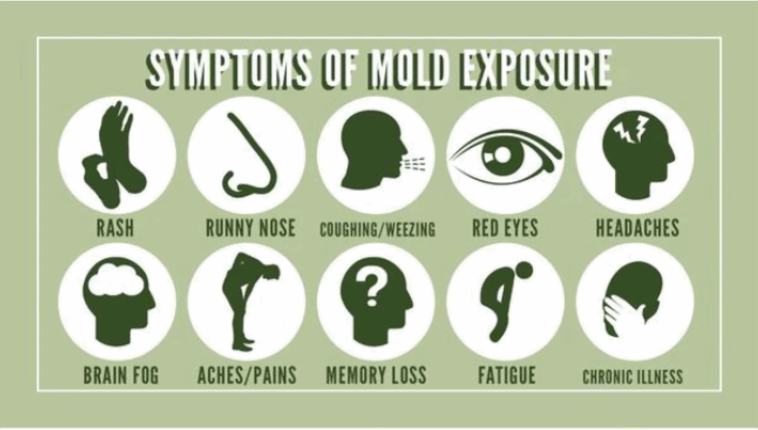
The Hidden Health Risks Lurking in Our Homes
Many homeowners in areas like Marietta are slowly coming to realize that the unexpected enemy in their homes isn’t just the wear and tear on walls—but tiny mold spores that may be sapping your energy, causing persistent fatigue and interfering with your sleep. Recent insights have shed light on how these uninvited guests—thriving in damp corners and often hidden from plain sight—could be playing a role in unexplained and chronic tiredness. In this opinion editorial, we take a closer look at the connection between mold exposure and fatigue, reveal the tricky parts of mold detection, and offer practical steps for home maintenance and improved indoor air quality.
When dampness and condensation are allowed to linger in your home, particularly in tucked-away spaces like basements, crawlspaces, or bathrooms, the growth of mold becomes not only a property maintenance concern but also a subtle health hazard. Mold spores can circulate around your living space, making you feel worn out even after a full night’s sleep. Understanding the hidden complexities of this issue can help you find your way through the tangled issues of home upkeep and health improvement.
Understanding How Mold Affects Energy Levels
Many people experience tiredness or lack of energy and mistakenly attribute it solely to stressful schedules or lifestyle habits. However, when symptoms like brain fog, sinus congestion, or headaches persist, it might be time to consider the environmental culprits inside your home. According to experts, mold exposure releases microscopic toxins—mycotoxins—that can unsettle your respiratory system and even trigger immune responses. Over time, these effects might disrupt your sleep and cause ongoing fatigue.
As you get into the matter of how mold can leave you feeling drained, consider that:
- Mold spores can cause allergic reactions that interfere with deep, restorative sleep.
- The airborne toxins may cause inflammation and irritate your respiratory system.
- People with existing allergies, asthma, or weakened immune systems are particularly vulnerable.
Recognizing these subtle details can be the first step toward taking control of not only your home’s safety but also your personal well-being. A deeper understanding helps you see that the cause of ongoing fatigue might not always be external life pressures—it can be a hidden enemy in your living space.
Unpacking the Science Behind Mold-related Fatigue
For those willing to poke around the science behind mold, the explanation is both detailed and eye-opening. Mold spores produce tiny toxic compounds known as mycotoxins. These compounds are notorious for disturbing your respiratory system. When exposed to these toxins, your body may respond with an immune reaction, leading to congestion, headaches, and even the feeling of being constantly on edge or drained.
It might seem overwhelming to get into the science of these minute toxins, but here is a simplified breakdown:
| Factor | Impact on Health |
|---|---|
| Mycotoxin Release | Triggers allergic reactions and respiratory irritation. |
| Immune Response | Over time can lead to chronic fatigue and diminishing energy levels. |
| Prolonged Exposure | May be linked to conditions that mimic chronic fatigue syndrome. |
This simple table outlines the little twists and fine shades of how mold interacts with your body. By understanding this mechanism, you can see that the connection between mold and fatigue is not abstract but rooted in tangible biological processes.
Common Sources of Mold Exposure in the Home
In many homes, particularly those affected by humid climates, mold finds the perfect environment to flourish. The absence of proper ventilation, combined with sources of moisture such as leaking roofs, condensation on windows, and plumbing issues, create the ideal setup for these harmful spores to grow and spread.
Common areas where mold tends to accumulate include:
- Basements and Crawlspaces: Often forgotten spots where moisture accumulates.
- Bathrooms: High humidity levels combined with limited ventilation.
- Kitchen Areas: Condensation from cooking and occasional leaks contribute to damp conditions.
- Attics: Poor insulation and ventilation can lead to hidden mold growth.
By taking a closer look at these high-risk areas, homeowners can begin to recognize the signs of mold, such as musty odors, discoloration or stains on walls and ceilings, and a general feeling of dampness throughout the space.
Spotting the Signs: Identifying Hidden Mold in Your Home
Not all mold is easily visible. In fact, some of the most toxic growth can occur behind walls or under flooring, far from your immediate sight. When mold is in its early stages, homeowners may only notice a subtle odor or a slight degradation of indoor air quality. It’s important to remember that even if you can’t see the mold, you might still be breathing in harmful spores.
Here are some key indicators that might suggest hidden mold growth in your home:
- Unexplained Tiredness or Fatigue: Waking up feeling drained despite adequate sleep.
- Sinus and Respiratory Issues: Chronic coughing, congestion, or headaches that persist.
- A Musty Smell: A persistent, damp odor especially in confined spaces like basements.
- Visible Discoloration: Dark patches or stains on drywall and ceilings.
These signs may require you to steer through a series of inspections, possibly even enlisting professional help to find the source of the problem. Early detection is key when managing your home’s indoor air quality.
Improving Indoor Air Quality for Better Health
Addressing indoor air quality is super important in reducing the risk of continuous fatigue and respiratory distress caused by mold exposure. With the help of air purifiers, HEPA filters, and regular HVAC system maintenance, you can capture airborne spores before they cause noticeable harm.
Consider these key measures to improve indoor air quality:
- Use HEPA Air Filters: These filters are excellent at trapping mold spores and other allergens.
- Install Ventilation Fans: Particularly in high-moisture areas such as bathrooms and kitchens to reduce humidity levels.
- Maintain Your HVAC System: Regular cleaning and servicing of ducts and vents can prevent the recirculation of contaminated air.
- Dehumidifiers: These are crucial in maintaining indoor humidity below 60 percent.
Managing these fine details can make a significant difference in your everyday living environment. With a cleaner, drier air supply, you not only reduce the risk of mold proliferation but also create a more comfortable and healthy home.
Practical Strategies to Prevent Mold Growth and Fatigue
Prevention is always easier and more affordable than remediation. By taking proactive steps to reduce moisture levels and address leaks as soon as they occur, you can steer through many of the tangled issues of mold infestation.
Some practical prevention strategies include:
- Immediate Leak Repairs: Taking action at the first sign of a damp spot or water leak can prevent mold from getting a foothold.
- Regular Inspections: Scheduling routine checks in basements, crawlspaces, and attics to catch potential mold growth early on.
- Maintaining Proper Ventilation: Using exhaust fans in bathrooms, kitchens, and laundry areas can greatly reduce moisture build-up.
- Controlling Humidity Levels: Utilize dehumidifiers during the warmer months or when high humidity is forecasted.
In order to assist in decision making, consider the following table summarizing common mold prevention tips:
| Prevention Tip | How It Helps |
|---|---|
| Fixing Leaks Immediately | Stops moisture build-up that leads to mold growth. |
| Proper Ventilation | Keeps humidity down, reducing the chances for mold to thrive. |
| Dehumidifiers | Maintain indoor humidity under 60%, creating an inhospitable environment for mold. |
| Routine Inspections | Early identification of mold can prevent widespread contamination. |
These straightforward practices can allow you to take the wheel in keeping your home safe and breathable. After all, a dry, well-maintained home not only keeps mold at bay but also enhances overall quality of life.
Robust Mold Testing and Remediation Options
When mold is suspected but not immediately visible, professional mold testing becomes a super important step. Expert remediation teams can use specialized equipment to detect even small amounts of mold spores hidden in walls, undetected by the naked eye. The process often starts with air sampling and surface analysis to pinpoint the specific problem areas.
Here are the typical steps involved in professional mold testing and remediation:
- Inspection and Assessment: Experts inspect your property, looking for both visible mold and the subtle signs of hidden infestation.
- Air and Surface Testing: Collection of samples from various areas of your home to measure mold spore concentrations.
- Analysis and Reporting: Laboratory analysis provides a better understanding of the type and concentration of mold present.
- Remediation Actions: Depending on the severity, professionals may recommend complete removal or focus on cleaning and repair of affected areas.
If an infestation is widespread or has infiltrated hidden spaces, relying solely on cleaning solutions might be off-putting and ineffective. In such cases, consulting with a professional remediation company is key to ensuring that the mold—and the tiredness it might be causing—does not return.
Maintaining a Mold-Free Home in Humid Climates
For households in warm and humid regions like Marietta, controlling moisture plays a key role in preventing mold growth. Seasonal storms, high unique humidity levels, and unpredictable weather patterns mean that homeowners must be extra vigilant about moisture buildup.
Here are some tailored strategies for combating mold in humid climates:
- Seal Windows and Doors: Ensure that windows and door frames are properly sealed to prevent moist air from intruding.
- Regular Roof Inspections: Check your roof for leaks or damaged shingles, especially after heavy rains.
- Improve Air Circulation: Use ceiling fans or portable fans to encourage air movement, which can help lower indoor humidity levels.
- Weatherproofing: Consider weatherproof insulation and moisture barriers in vulnerable areas like basements and crawlspaces.
These measures may seem like complicated pieces to manage, but when you take the time to work through these small distinctions, you can make a noticeable difference in both property maintenance and your overall well-being. Preventive measures not only protect your investment but also safeguard your health from the constant onslaught of environmental stressors.
The Role of Professional Guidance in Managing Indoor Mold
As with many home improvement projects, it isn’t always easy to figure a path through the tangled issues of mold remediation on your own. Although DIY methods can sometimes work for minor growth, tackling complicated infestations usually calls for professional intervention. Experts in mold remediation can provide comprehensive testing, precise air quality assessments, and targeted cleaning processes that ensure mold is completely removed.
Professional guidelines often stress that:
- Mold removal isn’t just about scrubbing the visible areas—it involves thoroughly addressing the source of moisture too.
- Effective remediation takes into account both the fine points of cleaning and the broader strategy to prevent future growth.
- It’s critical for homeowners to combine professional insights with hands-on maintenance to truly protect their investments and home-cum-sanctuary.
When you arm yourself with expert guidance, the process of getting into your home’s nitty-gritty becomes less intimidating and more manageable. This collaboration between homeowners and professionals is a must-have partnership for both immediate relief and long-term home health.
Balancing Home Maintenance with a Healthy Lifestyle
It’s clear that maintaining your physical home can have a direct impact on your personal energy levels and overall health. From improved indoor air quality to reduced fatigue, the advantages of proactively controlling mold are full of benefits that extend far beyond simply preserving property value. Home maintenance isn’t just about aesthetics—it’s closely tied to the way you feel day in and day out.
Some of the small distinctions and practical everyday steps that can result in significant long-term benefits include:
- Regular Home Inspections: Dedicate time periodically to check various areas prone to moisture.
- Prompt Repairs: Don’t let a minor leak or condensation issue grow into a full-blown mold problem.
- Ventilate Your Home: Even on cooler days, a bit of fresh air can help disperse indoor pollutants.
- Keep a Cleaning Schedule: Regular cleaning of hidden spaces like behind appliances and under furniture prevents mold build-up.
By sorting out daily routines and integrating simple maintenance tasks into your schedule, you create an environment that supports both the physical integrity of your home and your overall health. These routine habits provide a steady line of defense against mold and other environmental stressors that can subtly drain your energy.
Looking Ahead: A Proactive Approach to Home Health
The connection between mold exposure and chronic fatigue offers a cautionary tale for all homeowners. It serves as a reminder that protecting your home is not merely a matter of keeping up appearances but is also about preserving your energy and quality of life. When your living space is free of harmful contaminants, you pave the way for better sleep, improved concentration, and increased day-to-day vitality.
Taking the wheel and managing your way through the often intimidating maze of indoor environmental risks involves several key actions:
- Be aware of the hidden growth areas and take timely preventive measures.
- Invest in quality air purifiers and ensure proper ventilation throughout your home.
- Routinely inspect for signs of leaks, condensation, and unexplained dampness.
- Engage professional services for thorough mold testing and remediation, if needed.
This proactive approach means you are not left feeling helpless when confronted with the subtle issues that can accumulate over time. Instead, you reinforce a lifestyle where both your home and well-being are given the super important attention they deserve.
Final Thoughts: Restoring Balance with Home and Health
At the end of the day, every homeowner deserves a safe and energy-enhancing living environment. Hidden mold growth is a reminder that the small, easily overlooked details in our homes can have a disproportionate impact on our health. By digging into the root causes and understanding the connection between mold exposure and fatigue, you empower yourself to take a stand against this silent intruder.
Balancing the challenges of home maintenance with real health benefits isn’t a nerve-racking task if tackled step by step. For those in regions prone to high humidity and damp conditions, it becomes even more important to figure a path through regular inspections, effective cleaning, and timely repairs. It’s not just about protecting your walls or ceilings—it’s about sustaining the energy and vitality you need for a fulfilling life.
The intertwined nature of indoor air quality and personal wellness cannot be understated. As more homeowners discover the impact of environmental quality on their well-being, the community is slowly moving towards more informed and healthier living practices. Remember, every small twist and turn that you manage in your home can lead to a noticeable difference in how you feel every day.
In conclusion, while the presence of mold might seem like a minor annoyance at first, its potential to cause chronic fatigue and disrupt sleep highlights the need for consistent vigilance in home maintenance. Whether you choose to tackle some problems on your own or seek help from professionals, the key is not to ignore the early warning signs. From fixing leaks and controlling humidity to investing in air quality improvements, every measure counts.
Embrace this proactive approach and remind yourself that your home should be a sanctuary—a place that not only shelters you but also recharges your body and mind. By taking small, deliberate actions today, you can ensure a healthier, more energetic tomorrow.
Originally Post From https://markets.financialcontent.com/stocks/article/pressadvantage-2025-11-5-mold-exposure-linked-to-fatigue-moldstar-remediation-shares-health-insights-for-marietta-homeowners
Read more about this topic at
Could Mold Illness Be Causing Your Fatigue?
Mold inhalation causes innate immune activation, neural …

